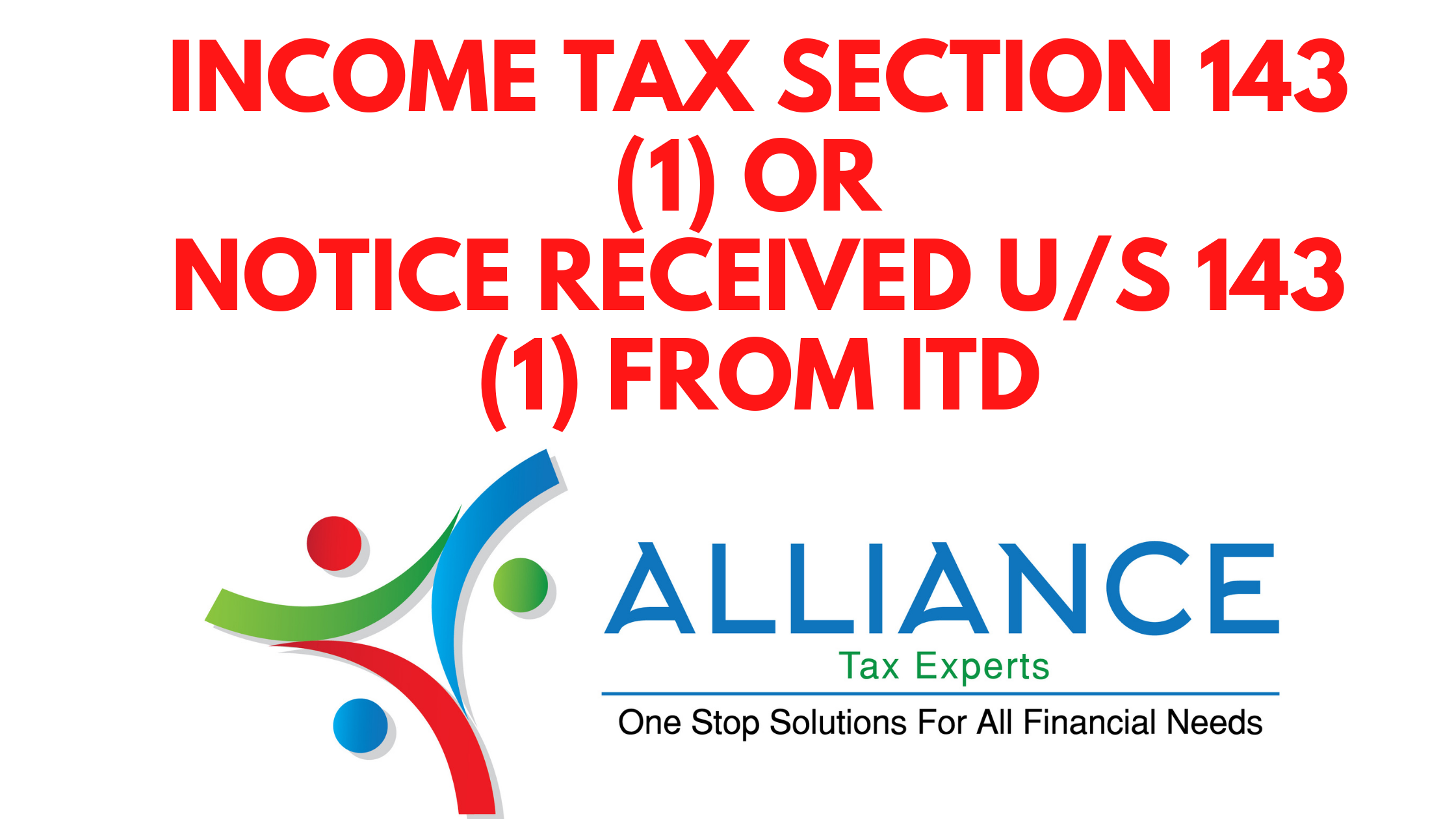
23 Feb
Income tax section 143 (1)
Income tax section 143 (1)
Taxpayers are
somewhat annoyed when they hear the words tax, tax return. If there is any
notice from the Income Tax Department, this displeasure turns into fear.
Taxpayers are frightened by any notice or letter from the Income Tax
Department. However, the Section 143 (1) notice means there is no need to
worry.
1. Letter of Intimation u
/ s 143 (1)
The income tax
return can be filed voluntarily as per section 139 of the Income-tax Act, 1961
or it can be demanded from the Income-tax department as per section 142 (1).
Preliminary
assessment of all returns is done by the income tax department after filing the
return by the taxpayer. The information or information received by the taxpayer
in this regard after completion of the preliminary verification is called
information or information received by 143 (1).
• Preliminary
verification is done entirely by computer.
Due to the
increase in the number of returns, the entire process of preliminary
verification of returns (e-returns and papers) has been carried out at CPC
Bangalore as per the advice of the Technical Advisory Group.
No person is
involved in this process. This speeds up the initial verification and reduces
the workload on the income tax department.
2. Preliminary
verification
• It verifies
the information filled in by the taxpayer and the information available with
the income tax department through a computer or system. E.g. Form 16, Form 26AS
and AIS, TDS information obtained through a bank, etc.
• If any errors
are found in it, it is recorded in the system. This whole process runs
according to the program in the computer, that is, the system is generated.
After filing
the return by the taxpayer, the information about income or loss is checked by
computer with the information of the taxpayer which is available with the
income tax department. The taxpayer is informed by comparing the two.
It consists of
two columns - the first is the information filled by the taxpayer and the
system-generated information as per clause 143 (1). In it, while checking
information
A
o Income from
various sources
o Total income
o Deductions as
per Chapter VIA Section 80C, 80D, etc.
o Tax deducted
at source
o Advance tax
(tax payments by taxpayers in the form of advance tax and self-assessment tax.)
Verification is
done based on all the above points.
Final tax
liability or refund is decided after all verifications as per section 143 (1).
In this regard,
the taxpayer is notified in writing or electronically (email). The response
must be received from the taxpayer within 30 days from the date of issue of the
notice. In the case of non-receipt, the final liability is decided based on
preliminary verification under section 90/91 and the relevant information is
prepared and reported to the assessee.
• Final tax
liability is determined by considering TDS and tax payment and other reliefs
mentioned in section 90/91.
This includes
the following instructions
·
No
liability or refund
·
Taxation
and its amount
·
Refund
and its amount
When the amount
of tax liability is demanded from the taxpayer, it is his final liability.
Also, the refund amount is refunded to the taxpayer along with interest.
3. Adjustments made under
Section 143 (1)
·
Adjustments
to be made under section 143 (1) in determining total income and loss.
·
Arithmetical
error in the return when calculating the return or calculating in the wrong
place
·
Under
false income or wrong claim when making a claim
·
Carry
forward of loss claim of the previous year made after the due date
·
Returns
that appear in the audit report but are not specified
4. Duration
Notice of
return as per section 143 (1) is sent within one year from the end of the
financial year for which the return has been filed.
• If the
taxpayer does not receive any notice during the year, then there is no change
in the same tax liability and refund and the returns filed by him are valid.
5. The role of the
taxpayer after receiving the notice under section 143 (1)
•
First
of all, understand the instructions properly and verify the relevant documents.
Re-check the
information in the instruction e.g. Name, address, PAN number, assessment year,
an acknowledgement number of e-filing, etc.
•
If
the taxpayer notices errors in filing the return, correct them immediately and
file the revised return.
•
If
the taxpayer does not find any error in his return form and the taxpayer does
not agree with the notice received or does not notice exactly what went wrong,
then he should apply in this regard as per section 154 (1) to rectify the
errors indicated by section 143 (1).
·
If
the taxpayer agrees to these adjustments, he is obliged to pay the additional
tax amount indicated by the Income Tax Department.
·
When
paying tax in this section, select the option of 'Regular Assessment (400) Tax'
according to the type of payment in the currency type.
·
If
the taxpayer does not agree with the notice given by section 143 (1) or
correction of errors, he should contact the concerned Assessing Officer in this
regard.
·
If
it has not been admitted by the concerned Assessing Officer, a complaint should
be lodged with the Lokayukta of the Income Tax Department.
Regards
Santosh Patil
Founder
Alliance Tax
Experts Pvt Ltd
#alliancetaxexperts
#intimation1431 #incometax #order #incometaxnotice #taxconsultant
#incometaxconsultant #gstconsultant #audit #ca #accountant #professioanls
#nearme #navimumbai #onlineitr